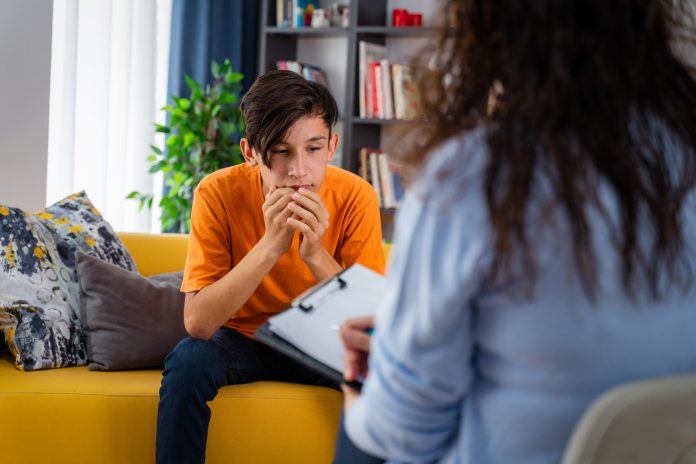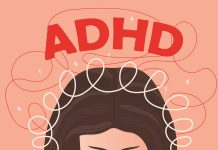Dr Deborah Lee of Dr Fox Online Pharmacy explores the worrying prevalence of young people with poor mental health, why it’s on the rise, and what can be done to prevent mental ill health and provide the necessary support
Our children and young people are in the midst of a mental health crisis. In 2023, NHS England reported that one in five children and young people had a probable mental health disorder. This figure was 23.3% in 17-19-year-olds and 21.7% in those aged 20-25 years.
The pandemic brought disruption and homeschooling to children’s lives, resulting in social isolation. Around 140,000 children never went back to school after the pandemic. The rise of the smartphone and the relentless pressure of social media have had substantial negative consequences for children, affecting their communication skills, concentration, schoolwork, and sleep. Alcohol, tobacco and drug use, especially cannabis, are rife. In addition, it has become increasingly complex for anyone – let alone a young person – to get a GP appointment.
Underfunded services
CYPMHS services have historically been underfunded. The NHS Long Term Plan (2019) promised to increase funding by £2.3bn a year to allow an extra 345,000 children to be seen and a minimum four-week wait.
However, 2024 data show that only 48% of children on the 1.4 million waiting list have had one contact with a health professional. The average waiting time is 170 days, and some have waited over two years!
A MIND (2021) survey of 500 young people came to some interesting conclusions. Those most at risk of mental ill-health are children and young people from disadvantaged backgrounds who have suffered recent or past trauma such as abuse or neglect, racism, or discrimination due to their ethnicity, identity or gender.
Problems often arise at school, but teachers are not trained to recognise mental ill-health and can inflict punishments which escalate issues and worsen mental health symptoms. Usually, young people don’t feel they are properly listened to, and hence, they feel their mental health issues are trivialised. They are stuck on long waiting lists and shunted from service to service. They feel a lack of communication with mental health services.
How a lack of mental health support impacts young people with poor mental health
Failure to identify mental health problems may be put down to bad behaviour and result in punishments which restrict and isolate the child or young person. Anger can turn into violence. This may then spiral to involve drug use, criminal behaviour and high-risk sexual activity with the consequence of STIs and unwanted pregnancies.
Children and young people with poor mental health are also more at risk of exploitation and crime. Children taken into custody are known to be three times more likely to have a mental health condition than those who are not mentally unwell.
Young people frequently turn to drugs, nicotine or alcohol to help them cope with mental health symptoms. Not accurately addressing their mental health needs is pushing them more toward the use of addictive substances and all their negative and detrimental life consequences.
Recent (2023) research has shown that young people aged 12 and under who’ve had a traumatic childhood, including parental drug misuse, have the highest risk of cannabis use in their teenage years.
Government statistics show that in 2022/2023, 12,418 young people under the age of 18 were receiving treatment for substance abuse. 87% of these were having therapy for cannabis use. 44% were having treatment for alcohol use, with smaller numbers having treatment for cocaine or ecstasy.
What measures can be taken at the policy level to support a multidisciplinary approach to addressing poor mental health?
Policymakers need to start by listening to the voices of children and young people. Since 2010, youth services have been cut across the UK by 69%. In addition, 4,500 youth worker jobs have been lost and 750 youth centres have closed. This has been hugely harmful to young people’s health, especially when young people value their relationships with youth workers enormously.
Young people’s views
In July 2022, the Centre for Mental Health report ‘Heads Up, Rethinking mental health services for vulnerable young people,’ drew many practical conclusions including:
- Mental health discussions should be made a routine part of holistic healthcare.
- These discussions would ideally take place somewhere such as a Youth Club or Youth Centre, where they feel safe, will not be judged, and where what they say is confidential.
- They value a ‘drop-in’ service with someone they trust. They would like those working in youth service to do so as a long-term commitment so that staff do not always come and go.
- Mental health problems don’t exist in isolation, so they must involve coordinated work with families and schools.
- Volunteering is popular with young people. They realise it helps with communication skills socialising and helps them feel better about themselves
- Social prescribing for mental health issues in children and young people needs to be recognised.
- Racism must be obliterated. Culturally appropriate support should be available for those from different racial backgrounds.
- Improved support and services for the LGBQTI sector, for whom current provision is woefully inadequate.
- Early intervention must be the key, and not leaving problems to fester and magnify.
- Digital support in terms of online counselling should be available, especially as it is beneficial for hard-to-reach groups.
The youth of today are the leaders of tomorrow. We ignore the desperate needs of our children at everyone’s peril. Those 750 lost youth centres speak volumes. Now is the time to take our children’s and young people’s mental health seriously. None of us can afford to wait.











